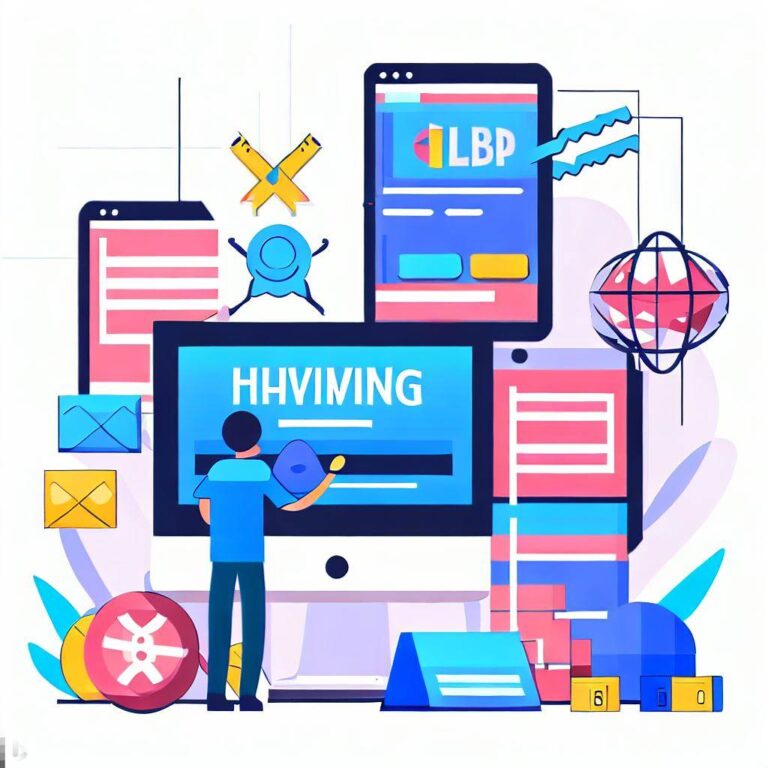Unveiling the Synergy: Demand Generation and Lead Generation Strategies for Web Developers
Understanding Demand Generation
Demand generation is akin to planting seeds in a garden. It’s about sparking interest and building a foundation for future growth. For web developers, this means creating content that educates and informs potential clients about the value of web development services. Blog articles, social media posts, and webinars are excellent tools for this purpose. The goal is to establish your expertise and position your services as solutions to common problems, thereby increasing brand awareness and attracting a broader audience interested in what you offer.
Dive into Lead Generation
Lead generation, on the other hand, is like harvesting crops from the garden you’ve planted. It’s focused on converting interested individuals into actual leads who are ready to engage further. For web developers, this involves more direct actions such as offering free consultations, hosting webinars where participants must register with their contact information, or sending personalized emails to those who have shown interest in your services. The aim is to qualify these leads, ensuring they are genuinely interested in your offerings and ready to move forward in the sales process.
The Power of Combining Both Strategies
The real magic happens when you combine demand generation and lead generation. Imagine maintaining a lush, productive garden while also actively harvesting its fruits. By doing so, you ensure a steady stream of potential clients who are well-informed about your services and ready to take action. This combination supports both long-term growth through establishing trust and credibility and immediate gains through direct engagement and conversion.
Practical Tips for Web Developers
- Content Creation: Develop a variety of content that answers common questions about web development, showcases your expertise, and highlights the benefits of your services. This includes blog posts, guides, case studies, and educational webinars.
- Engagement Tactics: Use social media platforms to interact with your audience, participate in relevant online communities, and host live Q&As or workshops. These activities not only raise awareness but also encourage direct engagement.
- Nurturing Leads: Implement a lead management system to track interactions with potential clients. Personalize your communication based on their interests and past engagements to keep them engaged until they’re ready to commit.
- Measurement and Adjustment: Regularly review your strategies’ performance using analytics tools. Adjust your approach based on what works best for reaching and converting your target audience.
Conclusion
For web developers, mastering both demand generation and lead generation is essential for achieving sustainable growth and success. By understanding the nuances of each strategy and how they complement each other, you can effectively attract, engage, and convert potential clients into loyal customers.
Understanding Demand Generation and Lead Generation
In the bustling landscape of web development, two key strategies emerge as pivotal forces for attracting and converting potential clients: Demand Generation and Lead Generation. Often treated as distinct entities, these strategies are actually interconnected, creating a mutually beneficial relationship that propels businesses forward. Let’s dissect these concepts to understand their roles and how they synergize to boost success in the industry.
Demand Generation: The Foundation of Interest
Demand Generation is akin to laying the groundwork for a successful marketing campaign. It’s about identifying and addressing the needs of your target audience before they even realize they have them. By providing valuable insights and solutions, you position yourself as a thought leader in your field, building trust and credibility among potential clients.
Example: Content Marketing
Imagine a web development company that regularly publishes articles on the latest trends in website design and optimization. These pieces aren’t just about driving traffic; they’re about establishing the company as an authority in its field. When potential clients search for solutions to their web development challenges, they find this company’s expertise, leading to increased demand for its services.
Lead Generation: Turning Interest into Action
Whereas Demand Generation focuses on fostering interest, Lead Generation is all about converting that interest into actionable leads. This strategy involves capturing contact information from individuals who have shown a genuine interest in your products or services, enabling you to nurture relationships and guide them towards making a purchase decision.
Example: Webinars and Demos
Consider a scenario where the same web development company hosts interactive webinars showcasing how their services can enhance online presence. Attendees who sign up for these sessions are prime leads, as they’ve expressed a direct interest in learning more about what the company offers. With their contact details, the company can reach out personally, offering tailored demonstrations and further discussions, significantly increasing the likelihood of conversion.
The Synergy Between Demand and Lead Generation
The true power of these strategies lies in their ability to work together seamlessly. By generating demand, you create a pool of interested prospects. Then, through lead generation efforts, you effectively capture and engage these prospects, guiding them closer to becoming loyal customers.
Visual Aid: The Demand and Lead Generation Cycle
This cycle illustrates how continuous engagement and value provision can transform casual browsers into dedicated customers, highlighting the importance of both strategies in achieving sustainable growth.
In summary, Demand Generation and Lead Generation are not competing strategies but complementary forces that, when aligned, can propel a web development business to new heights. By understanding and leveraging the strengths of both, companies can attract, engage, and convert a broader range of potential clients, ensuring long-term success in the competitive web development market.
It seems there was no text provided for revision. Could you please share the specific section of the article about Demand Gen vs Lead Gen that you’d like me to rewrite?
Understanding Demand Generation
Demand Generation is the cornerstone strategy for sparking interest and awareness in your web development services. It’s all about laying the groundwork for potential clients to understand how your offerings can solve their problems. This approach doesn’t just sell products; it builds relationships by demonstrating your expertise and addressing real business needs.
The Role of Education
At its core, Demand Generation educates. By providing free, accessible resources that tackle common industry challenges, your brand establishes itself as a knowledgeable partner. These resources could be blog posts, guides, or webinars that offer insights into web development trends, best practices, and solutions to pain points. For instance, a guide on optimizing website load times can showcase your deep understanding of performance issues and propose effective strategies, positioning your company as a problem solver.
Building Trust Through Content
Content plays a pivotal role in Demand Generation. It’s not just about creating content; it’s about creating valuable content that resonates with your audience. This could mean sharing case studies of successful projects, hosting Q&A sessions with industry experts, or even offering templates and tools that help businesses improve their online presence. The key is to consistently deliver content that adds value, making your brand a go-to resource for anyone looking to enhance their digital footprint.
Practical Application
Let’s consider a hypothetical scenario: Your company specializes in e-commerce website development. A Demand Generation campaign might involve publishing a comprehensive guide on “How to Increase E-commerce Conversion Rates.” This guide would cover everything from site design principles to payment gateway selection, backed by data and expert advice. By doing so, you’re not only educating your audience but also showcasing your expertise in e-commerce development, which naturally leads to increased demand for your services.
Conclusion
Demand Generation is a strategic approach that transforms potential clients into informed decision-makers. By focusing on education and building trust through valuable content, your web development service stands out as a reliable solution provider. Remember, the goal isn’t just to generate leads; it’s to cultivate genuine interest and understanding, paving the way for meaningful partnerships with your clients.
Understanding Demand Generation vs Lead Generation
Demand Generation sets the stage by creating awareness and interest in your product or service among potential customers. It’s like planting seeds in a garden, preparing the soil with nutrients so that when the time comes, your plants will grow strong and healthy.
Lead Generation, on the other hand, is the next step where these seeds start to sprout. It’s about turning those initial interests into concrete leads, ready to be nurtured further. Imagine each lead as a seedling; through careful watering and sunlight, you help them grow into mature plants, ready for harvest.
The Role of Demand Generation
Demand Generation is all about laying the foundation. It involves creating compelling content, such as blog posts, whitepapers, and case studies, that highlight the unique benefits and value propositions of your offering. This phase is crucial because it educates potential customers about the problems your product or service can solve, without directly selling anything.
For example, if you’re marketing a software solution designed to improve project management efficiency, your demand generation efforts might include publishing articles on common project management pitfalls and how your software addresses them. This approach helps attract individuals who recognize these challenges and are seeking solutions.
Transitioning to Lead Generation
Once potential customers have been introduced to your brand and understand the value it offers, Lead Generation kicks in. This phase is about qualifying these interested parties to identify which ones are most likely to become paying customers. It’s like filtering out the strongest seedlings from the rest, ensuring only the best candidates receive further attention.
Lead Generation strategies often involve offering valuable resources in exchange for contact information, a practice known as “gating.” For instance, hosting a webinar on advanced project management techniques could attract project managers looking to enhance their skills. By requiring registration, you collect email addresses of those genuinely interested, thus generating leads.
Practical Applications
Both Demand Generation and Lead Generation are essential for sustainable business growth. They work together like two wheels on a bike, keeping the momentum going. Without Demand Generation, there wouldn’t be enough interested parties to convert into leads. Conversely, without Lead Generation, businesses would lack the qualified prospects needed to close deals and grow.
In summary, Demand Generation is about attracting a wide audience and sparking interest, while Lead Generation focuses on converting that interest into actionable leads. Both processes are vital for building a robust sales funnel and achieving long-term success in today’s competitive marketplaces.
Understanding Demand Generation vs Lead Generation
Demand Generation and Lead Generation are two critical strategies in the marketing landscape, often intertwined but serving distinct purposes. Let’s dive deeper into how they complement each other and why understanding their relationship is key to success.
The Role of Demand Generation
Demand Generation focuses on creating awareness and interest in your product or service among a broader audience. It’s about positioning your offering as the solution to potential customers’ needs without directly selling. This strategy involves various tactics such as content marketing, social media campaigns, and SEO to attract and engage a large number of people who might be interested in what you have to offer.
Example: Content Marketing Campaign
Imagine a software company launching a blog series on “How to Improve Your Business Efficiency.” Through insightful articles, the company educates its target audience on efficiency challenges and solutions, gradually building trust and establishing itself as an authority in business optimization. This is a classic example of Demand Generation in action.
The Power of Lead Generation
Lead Generation, on the other hand, is about identifying and capturing the contact information of individuals who have shown a genuine interest in your product or service. These leads are typically more qualified than the general audience reached through Demand Generation because they’ve taken a specific action, such as downloading a whitepaper or requesting a demo.
Strategy: Email Marketing Follow-ups
Following the content marketing campaign mentioned earlier, the software company could implement an email marketing strategy where visitors who downloaded the efficiency improvement guide receive personalized emails offering further insights or a free consultation. This targeted approach is Lead Generation in practice, focusing on converting interested parties into actionable leads.
Why Both Are Essential?
While Demand Generation broadens the reach and builds awareness, Lead Generation narrows down the focus to those ready to take the next step. Together, they form a powerful one-two punch in the sales funnel, ensuring a continuous flow of potential customers from initial interest to conversion.
Visual Aid: The Sales Funnel
Think of the sales funnel as a pipeline. Demand Generation fills the top of the funnel with a wide net, catching many potential customers. As these prospects move through the funnel, Lead Generation tactics narrow the pipe, filtering out only those who are genuinely interested and ready to engage further. This synergy between the two strategies ensures that resources are efficiently allocated towards converting potential customers into actual clients.
In summary, Demand Generation and Lead Generation are not competing forces but complementary strategies essential for a successful marketing campaign. By understanding and effectively implementing both, businesses can build a solid foundation of interested prospects, leading to increased conversions and overall growth.
Understanding Demand Generation vs Lead Generation
Demand Generation and Lead Generation are two critical strategies in marketing and sales, often used interchangeably but serving distinct purposes. To grasp their unique roles and how they complement each other, let’s delve into their definitions, differences, and the importance of a cohesive approach in achieving business goals.
What is Demand Generation?
Demand Generation focuses on creating awareness and interest in your product or service among potential customers who may not be aware of your offering. It aims to generate demand through various tactics such as content marketing, social media advertising, and SEO. The goal is to position your brand as a solution to potential customers’ needs, encouraging them to explore further.
Example: Content Marketing Campaign
Imagine a software company launching a blog series on “How to Improve Your Business Efficiency.” Through insightful articles, the company educates its audience on efficiency challenges and offers solutions, subtly promoting its own software as the answer. This campaign generates demand by positioning the company as knowledgeable and trustworthy, attracting potential customers interested in improving their business processes.
What is Lead Generation?
Lead Generation, on the other hand, targets individuals who have shown some level of interest in your product or service, such as filling out a form on your website or downloading a whitepaper. It’s about qualifying these prospects to determine their readiness to buy. Effective lead generation strategies include email marketing, webinars, and personalized outreach.
Example: Webinar on Product Features
A tech startup hosts a webinar showcasing the advanced features of its latest product. Attendees must register, providing their contact information. After the webinar, the company segments attendees based on their engagement levels and follows up with personalized emails tailored to their interests. This targeted approach narrows down the pool of potential buyers, focusing resources on leads more likely to convert.
Integrating Demand and Lead Generation
For businesses aiming to drive sustainable growth, integrating Demand Generation and Lead Generation is key. This synergy creates a seamless journey from raising awareness to converting interested parties into loyal customers.
Implementing a Holistic Approach
By aligning content strategies across different channels and employing a lead scoring system, businesses can ensure that their efforts are efficiently directed towards the most promising leads. This holistic approach not only maximizes the impact of individual strategies but also fosters a continuous loop of engagement and conversion, paving the way for sustained growth.
Conclusion
In essence, Demand Generation and Lead Generation are two sides of the same coin, each playing a crucial role in the customer acquisition process. By understanding their distinct functions and leveraging them together, businesses can build a robust marketing strategy that drives meaningful growth.
Understanding Demand Generation and Lead Generation
In the bustling world of web development, two strategies stand out as game-changers: Demand Generation and Lead Generation. These aren’t just buzzwords; they’re powerful tools that, when used correctly, can transform your business from a mere participant into a dominant force in the digital arena. But what do they really mean, and how can they benefit your project?
Demand Generation: The Awareness Catalyst
Demand Generation is all about creating interest and awareness around your product or service. It’s like throwing a pebble into a pond—ripples of interest spread far and wide, attracting potential customers who weren’t even looking for what you offer. This strategy focuses on educating your audience, building relationships, and fostering trust over time.
Example: Imagine you’re launching a new software tool designed to streamline project management. Instead of directly selling to project managers, you start by offering free webinars on common project pitfalls and how to avoid them. Through these educational sessions, you gradually build credibility and demonstrate the value of your tool, without overtly promoting it. This approach attracts a broader audience interested in project efficiency, setting the stage for future sales.
Lead Generation: The Conversion Specialist
Lead Generation, on the other hand, is the art of converting that initial interest into actionable leads. It’s akin to having a direct line to the people who are ready to take the next step with you. This strategy involves collecting contact information from individuals who have shown a genuine interest in your offerings, whether through forms on your website, email sign-ups, or social media interactions.
Example: Continuing with the project management tool scenario, after establishing yourself as an authority through your webinars, you introduce a lead magnet—a detailed guide on “5 Ways to Revolutionize Your Project Management.” Visitors who download this guide are prompted to share their email address, effectively turning them into leads. Now, you have a direct channel to communicate your value proposition, pricing, and benefits, making it easier to convert these leads into paying customers.
The Synergy Between Demand and Lead Generation
The real magic happens when you combine both strategies. Demand Generation sets the stage by attracting a wider audience and building brand awareness, while Lead Generation focuses on nurturing those interested into becoming loyal customers. Together, they create a seamless journey from curiosity to conversion, ensuring your business not only attracts but retains valuable clients.
Practical Application: Implement a content marketing strategy under Demand Generation to educate your target audience about industry challenges and solutions. Simultaneously, use email marketing campaigns under Lead Generation to personalize offers and keep potential customers engaged until they’re ready to buy.
By understanding and leveraging the strengths of both Demand and Lead Generation, web developers can significantly enhance their online presence, attract more clients, and achieve long-term success in the competitive digital marketplace.








